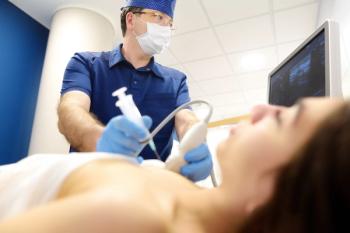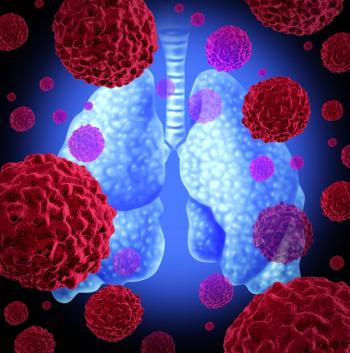
- ONCOLOGY Vol 15 No 11
- Volume 15
- Issue 11
Health-Related Quality of Life in Cancer Prevention Clinical Trials
Clinical trials of agents to prevent cancer in populations at risk are relatively recent. To date, these consist of a few large population-based studies. Trials in this area focus on the prevention of cancer in individuals with specific predetermined risk
Clinical trials of agents to prevent cancer inpopulations at risk are relatively recent. To date, these consist of a few largepopulation-based studies. Trials in this area focus on the prevention of cancerin individuals with specific predetermined risk profiles. Two largepopulation-based trials have already been launched and have completed accrual.These include the Breast Cancer Prevention Trial (BCPT-1, or National SurgicalAdjuvant Breast and Bowel Project [NSABP] P-1 trial) of tamoxifen (Nolvadex) inwomen at increased risk for breast cancer,[1] and the Prostate Cancer PreventionTrial (PCPT-1, or Southwest Oncology Group [SWOG]-9217) using finasteride(Proscar) as the agent in men at risk for prostate cancer.[2-4]
Clinical Trials Referral Resource is designed to serve as a ready reference for oncologists to help identify clinical trials that might be suitable for their patients. We hope it will also enhance accrual to clinical trials by informing practicing oncologists of ongoing protocols. Currently in the United States less than 10% of eligible adult patients are entered into clinical trials. The result is a delay in answering important therapeutic and scientific questions and disseminating therapeutic advances to the general oncology community.
It should be emphasized that including a specific trial does not imply that it is more important than another trial. Among the criteria for selection are that the trial is addressing an important question and is not expected to close in the immediate future (less than 1 year), and that initial staging or laboratory tests required for patient eligibility are widely practiced and available. Information on other protocols can be accessed via Physician’s Data Query (PDQ).*
We emphasize that this is an attempt to encourage referral of patients to these trials. We are specifically not soliciting additional members for the cooperative groups, nor are we suggesting how practicing oncologists should be treating patients who are not in a study.
This month’s installment of Clinical Trials Referral Resource is devoted to health-related quality of life issues in cancer prevention trials.
For patient entry information, see the individual trials.
* PDQ is a comprehensive database service provided by the National Cancer Institute’s International Cancer Information Center and Office of Cancer Communications for retrieval of cancer treatment information, including peer-reviewed statements on treatment options, supportive care, screening, and prevention; and an international clinical trials registry. For more information on PDQ, Internet access is available at
Findings from the BCPT-1 are among the first to demonstrate the benefit of achemopreventive agent in reducing cancer incidence in an otherwise healthy,at-risk population as determined by the Breast Cancer Detection DemonstrationProject model, sometimes called the Gail model.[5] In this study, increased riskfor breast cancer was defined as age 35 years or greater with histologicevidence of lobular carcinoma in situ or age 35 to 59 years with a minimumprojected 5-year probability of invasive breast cancer at least equivalent tothat of women 60 years of age. Women aged 60 years or greater were eligibleregardless of other breast cancer risk factors. The PCPT-1, although closed toaccrual, will continue to follow participants for up to 7 years or until theoccurrence of prostate cancer before data will be available for analysis. Riskof prostate cancer in this trial was defined as age 55 years or older, with aprostate-specific antigen (PSA) no greater than 3.0 ng/mL.
Smaller trials are being conducted that target the prevention of secondcancers in persons already diagnosed and treated for cancer. Few of thesetrials, however, include a health-related quality of life (HRQOL) measure. Animportant component of the large population-based primary prevention studies isthe inclusion in the study design of measures to assess the impact of thepreventive agent and knowledge of cancer risk on the participant’s HRQOL.
There are several reasons for the small number of population-based cancerprevention trials. Primary among these is the limited number of agents availablewith properties that prevent or interrupt the carcinogenesis process. Inaddition, there is heightened concern in such trials about the safety profile ofthe agents to be used. Because these agents will be given to healthy individualswho do not have cancer, assessment of risk/benefit takes on added importance.Investigators want to be sure that there will be a low incidence of morbidityassociated with prolonged exposure to any proposed agent. This risk, in turn,must be balanced against the anticipated efficacy of the drug in reducing cancerincidence or the burden of cancer to society. Finally, prevention trials arevery costly to conduct. Because the end point is a rare occurrence of cancer,thousands of subjects must be recruited and followed over long periods of timeto show effectiveness. While there has been much discussion of alternative orsurrogate end points (eg, specific biomarkers) for the actual occurrence ofcancer in these trials, there is no agreement on what valid surrogate end pointsshould be used.
Just as the basic design concerns of prevention trials are different when thecontext is primary prevention (in healthy at-risk groups) vs secondaryprevention (in already diagnosed groups), so too is the approach to HRQOLassessment. Health-related quality of life measures used in the context ofprimary prevention trials are most commonly standardized or developed for use inhealthy populations. Because individuals participating in these studies do nothave cancer, and in some cases, may not be at more than age-appropriate risk fordisease, use of cancer-specific scales are often of limited value. In thesesettings, it is important to use instruments that will permit comparison ofparticipants to other healthy samples or those with diverse (noncancer) chronicillnesses. In addition, any measures used must be sensitive to change over timesince these trials generally follow participants for several years.
As with many other types of clinical trials, HRQOL questions in these larger,population-based prevention trials can often be answered with a smaller samplesize than required for the principal prevention hypotheses. Thus, accrual to theHRQOL component may close before that of the larger study. Moreover, it is oftenpossible for several HRQOL studies, using different subsets of the larger trial,to be run in parallel. For example, in BCPT-1, in addition to informationcollected on the general HRQOL of participants,[6] ancillary studies exploringparticipants’ attitudes about the trial and adherence behavior were alsoconducted.[7-9]
Finally, prevention trials can offer the opportunity to address the effect ofbehavioral interventions on participants’ HRQOL and behavior. Research onissues related to adherence is one example of this type of research. Becausethese population-based studies are, by nature, long-term and longitudinal indesign, ensuring that individuals not only participate in, but also follow thespecified agent dosing across the course of the study is necessary to answer theresearch question. Measures of the effectiveness of protocol adherence behaviorof both participants and providers, and interventions to improve these couldhelp maximize the success of the trial in meeting its aims. At the same time,this information could inform investigators designing new trials about ways tomaximize accrual and retention.
Listed below are two large, population-based cancer prevention trialscurrently sponsored by the Division of Cancer Prevention, National CancerInstitute (NCI). Other NCI-sponsored trials for the prevention of primary orsecondary cancers are at various stages of development.
Breast Cancer
Group: National Surgical Adjuvant Breast and Bowel Project (NSABP)
Protocol Number: NSABP-P-2
Title: Study of Tamoxifen and Raloxifene (STAR) for the Prevention ofBreast Cancer
Eligibility Criteria: Postmenopausal women, 35 years of age or older, andwith increased risk of developing breast cancer as defined by age > 35 yearswith histologic diagnosis of lobular carcinoma in situ (LCIS) treated by localexcision only or a minimum projected 5-year probability of invasive breastcancer of at least 1.66% (ie, average probability for women 60 years of age), asdetermined by the Breast Cancer Risk Assessment Profile generated by the NSABPBiostatistical Center. Contact the Group for full eligibility/ineligibilitycriteria.
QOL Instruments/End Points: HRQOL Questionnaire consisting ofthree self-administered subinstruments: (1) Medical Outcomes StudyShort Form 36 (MOS-SF36)Subscales for physical functioning, rolefunctioning-physical, bodily pain, social functioning, mental health, rolefunctioning-emotional, vitality, and general health perceptions. End pointsinclude overall health rating, limitations to physical activities, problems atwork or in regular daily activity related to physical health or emotionalproblems, interference with social activities, pains, and interference withnormal work and emotional state. (2) Medical Outcomes Study SexualFunctioning Scales measure lack of sexual interest, difficulty in becomingsexually aroused, unable to relax and enjoy sex, difficulty in having orgasm.(3) Center for Epidemiological Studies Depression Scale (CES-D)Evaluatesfeelings, attitudes, and behaviors including depression, poor appetite, restlesssleep, hopefulness, failure in life, happiness or sadness, talkativeness,loneliness, enjoyment of life, crying spells, feeling disliked, feeling thateverything was an effort.
P-1 Breast Cancer Prevention Trial Symptom Checklist, Modified (SCL) 43items addressing symptoms, based on previous B-14 trial and clinical experienceof NSABP consultants. Current version is modified and shortened on the basis ofinformation from the P-1 trial.
Contact: Mary Ketner, (412) 330-4624. Additional information on the STARtrial may be obtained on the NCI website at
Prostate Cancer
Group: Southwest Oncology Group (SWOG)
Protocol Number: S0000
Title: Selenium and Vitamin E Cancer Prevention Trial (SELECT) forProstate Cancer
Eligibility Criteria: Men age 55 years or older or African-American menage 50 years or older, digital rectal examination deemed not suspicious forprostate cancer, and total PSA < 4.0 ng/mL. Contact the Group for fulleligibility/ineligibility criteria.
QOL Instruments/End Points: SF-36 Health Survey, Veterans’ version(SF-36V)The SF-36 instrument was modified for the Veteran’sAdministration ambulatory care setting. This included a change from adichotomous to a five-level response format for the two role-functioning scales.See MOS-SF36 above for end points. The Physical and Mental Component Scalesummary scores will provide the outcome variables for treatment comparisons.
UNISCALEA single-item measure of global HRQOL using a visual analogscale (VAS) measure from "lowest quality" to "highestquality."
Contact: Marj Godfrey, Coordinator (210) 677-8808. Additional informationon the SELECT trial may be obtained on the NCI website at
References:
1. Fisher B, Costantino JP, Wickerham DL, et al: Tamoxifen for prevention ofbreast cancer: Report of the National Surgical Adjuvant Breast and Bowel ProjectP-1 Study. J Natl Cancer Inst 90:1371-1388, 1998.
2. Feigl P, Blumenstein B, Thompson I, et al: Design of the Prostate CancerPrevention Trial (PCPT). Control Clin Trials 16:150-163, 1995.
3. Thompson IM, Coltman CA Jr, Crowley J: Chemoprevention of prostate cancer:The Prostate Cancer Prevention Trial. Prostate 33:217-221, 1997.
4. Thompson IM Jr, Kouril M, Klein EA, et al: The Prostate Cancer PreventionTrial: Current status and lessons learned. Urology 57:230-234, 2001.
5. Gail MH, Brinton LA, Byar DP, et al: Projecting individualizedprobabilities of developing breast cancer for white females who are beingexamined annually. J Natl Cancer Inst 81:1879-1886, 1989.
6. Ganz PA, Day R, Ware JE Jr, et al: Base-line quality-of-life assessment inthe National Surgical Adjuvant Breast and Bowel Project Breast Cancer PreventionTrial. J Natl Cancer Inst 87: 1372-1382, 1995.
7. Ganz PA, Day R, Constantino JP: Compliance with quality of life datacollection in the National Surgical Adjuvant Breast and Bowel Project (NSABP)Breast Cancer Prevention Trial. Stat Med 17:613-622, 1998.
8. Day R, Ganz PA, Constantino JP, et al: Health-related quality of life andtamoxifen in breast cancer prevention: A report from the National SurgicalAdjuvant Breast and Bowel Project P-1 Study. J Clin Oncol 17:2659-2669, 1999.
9. Yeomans Kinney A, Vernon SW, Shui W, et al: Validation of a modelpredicting enrollment status in a chemoprevention trial for breast cancer.Cancer Epidemiol Biomarkers Prev 7:591-595, 1998.
Articles in this issue
about 24 years ago
Management of Pressure Ulcersabout 24 years ago
National Alliance of Breast Cancer Organizations Relaunches Websiteabout 24 years ago
Color Atlas of Clinical Hematology, Third Editionabout 24 years ago
FDA Approves Capecitabine Plus Docetaxel for Metastatic Breast Cancerabout 24 years ago
Survey Finds Women Unwilling to Pay for Immediate Mammography ResultsNewsletter
Stay up to date on recent advances in the multidisciplinary approach to cancer.
































































































